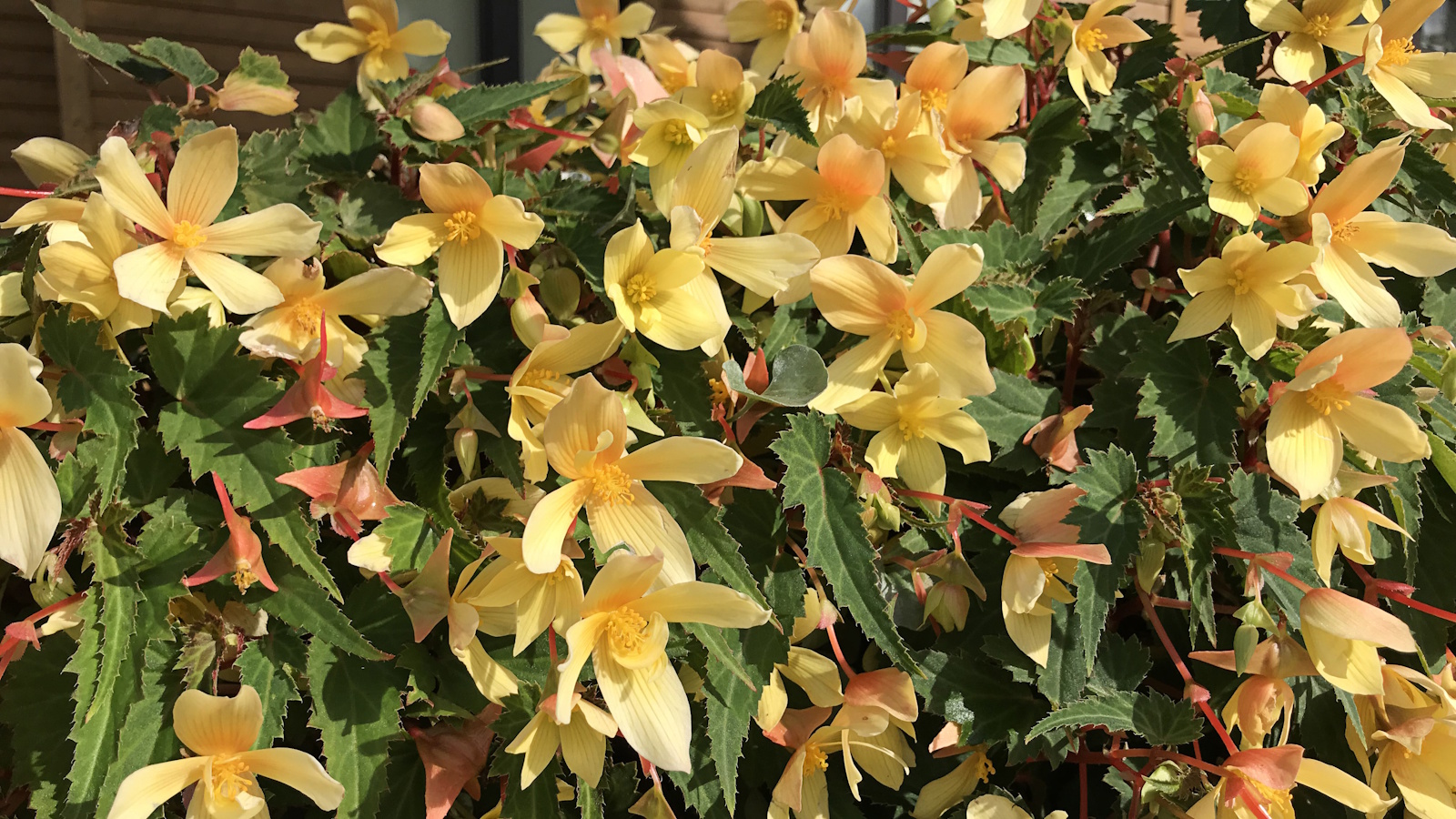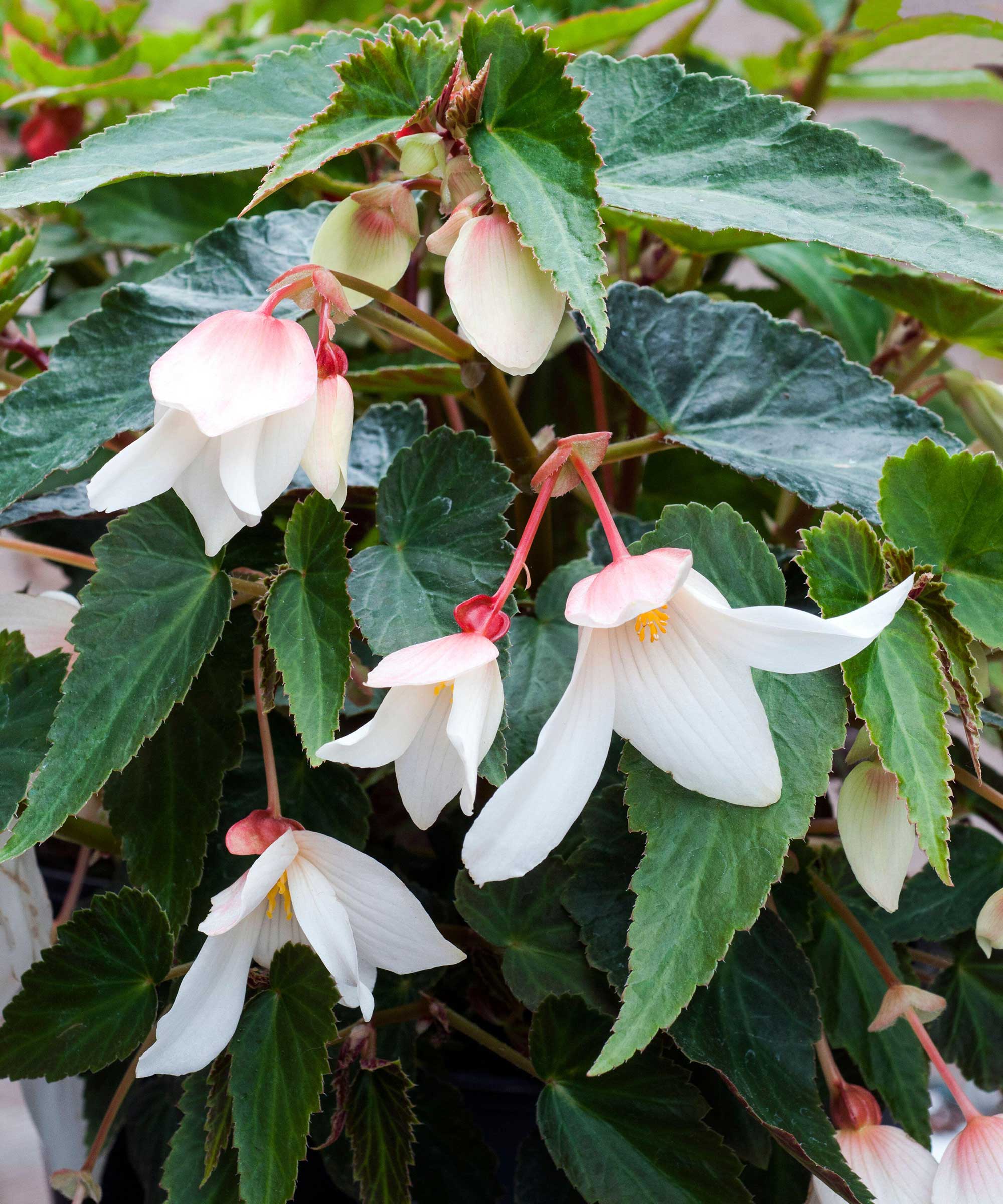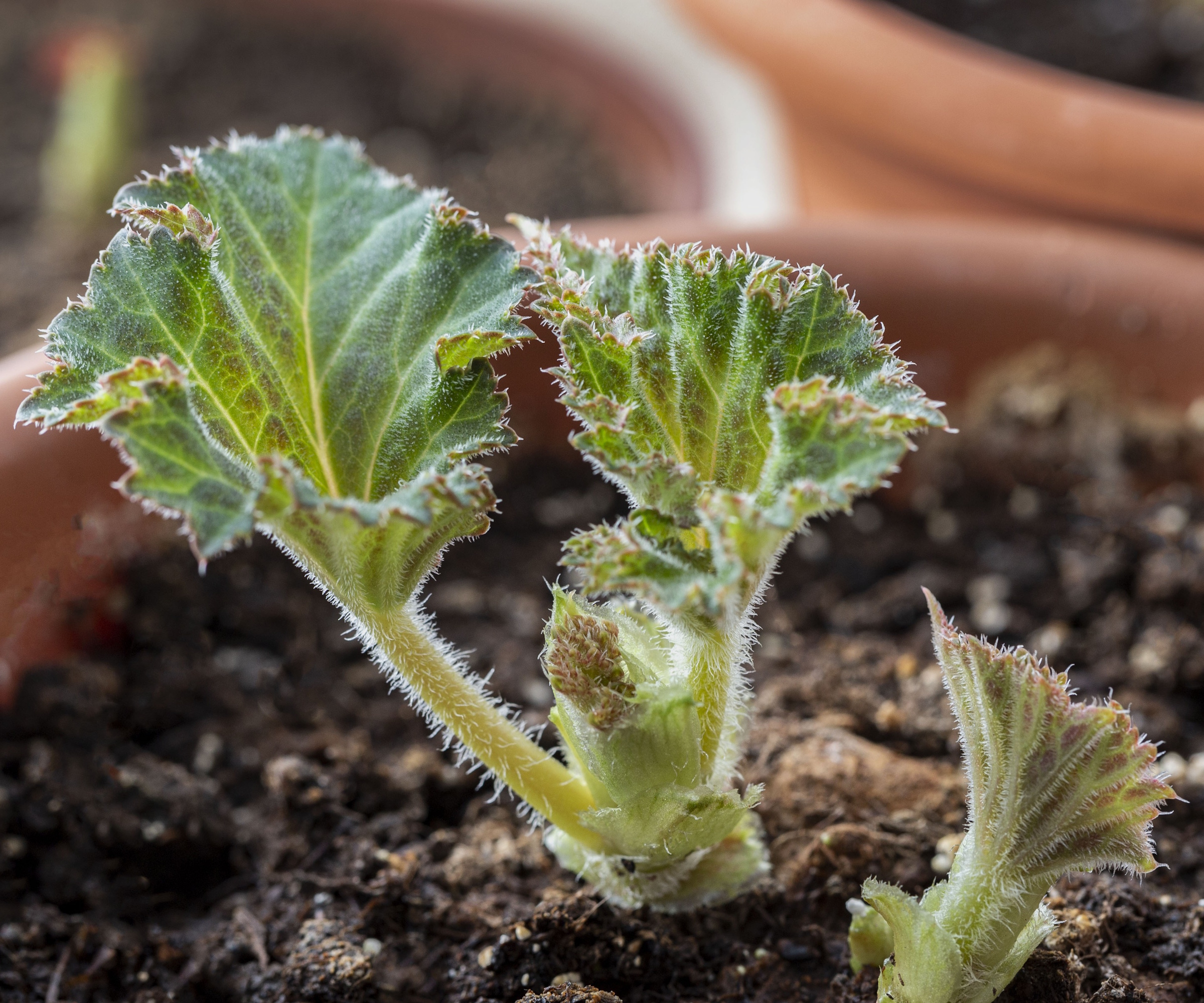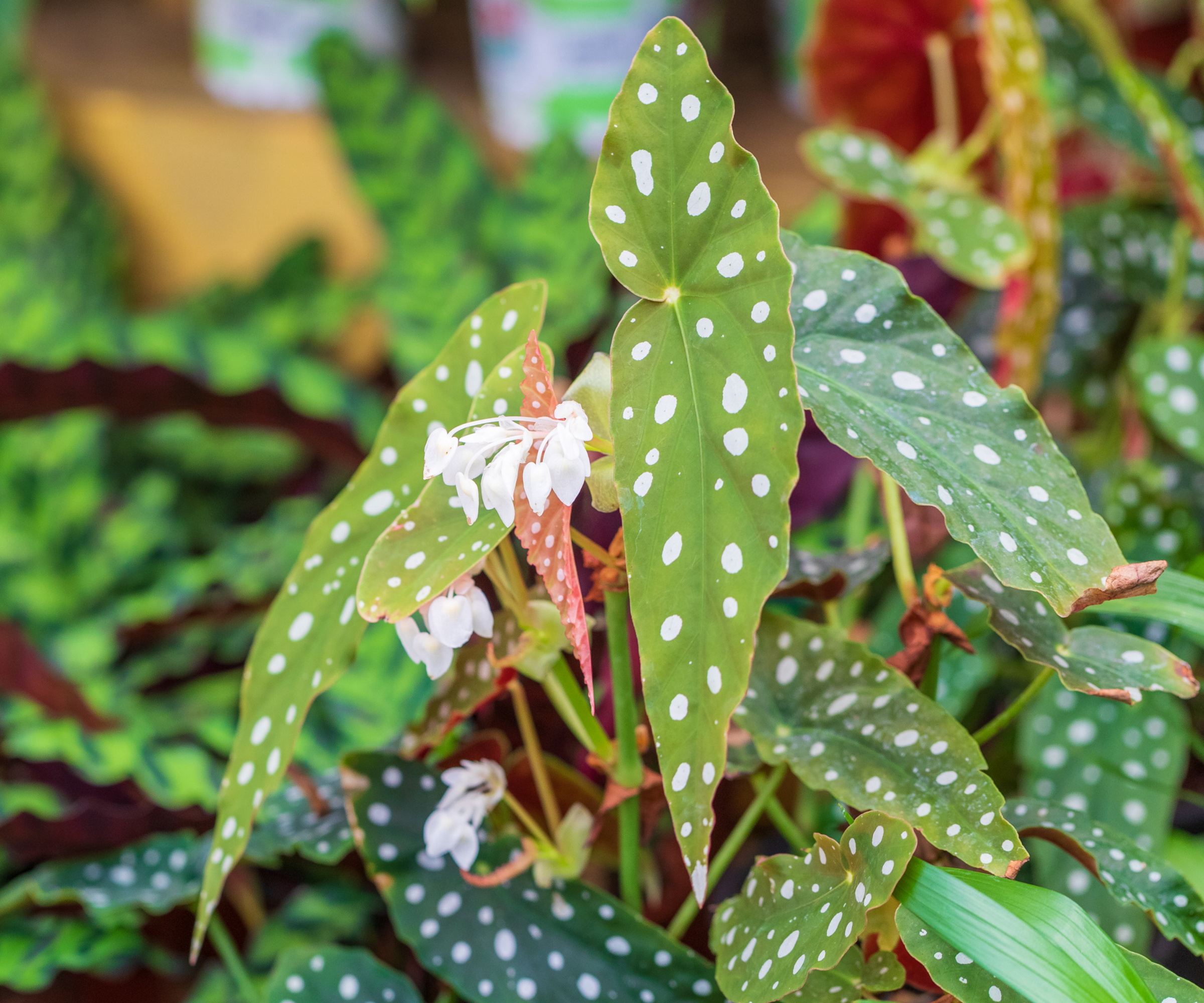
For many years, begonias have been considered out of fashion - viewed as gaudy and a little too much. While Victorian bedding schemes remain outdated, many unusual varieties are now in vogue, and learning how to plant begonia bulbs - or tubers - is an easy and cost-effective way to fill your yard with color.
Out of approximately 1,900 begonia species, my guess is that you will find one or two you like. From the tumbling star-like blooms of Begonia boliviensis, seen above, to the upright Begonia luxurians, with narrow spidery leaves - the diversity of this plant family is certainly impressive.
As a former professional gardener, I have planted more begonias than I can remember. Some can be grown from cuttings or seeds, while many of my favorite species can be planted as bulbs. Here's everything you need to know about bulb planting when learning how to grow begonias in pots or borders to enjoy brilliant summer displays this year.

Step-by-step guide to planting begonia bulbs
When considering how to grow begonias, most tuberose varieties are treated as tender annuals, typically grown for one season as summer bedding plants.
However, in warmer regions, such as US hardiness zones 9 and 10, begonias can be grown as perennials or even evergreens. In cooler regions, you can also treat many species as winter house plants, protecting them from cool frosts in northern regions.
When to plant begonia bulbs

There are many different begonia varieties that you can grow from bulbs. Most have long flowering seasons, typically blooming from late spring until the first frost, which is ideal if you are looking for colorful and low-maintenance patio plants.
The right planting time for your begonia bulbs will depend on your climate and whether you’re growing indoors or outdoors. Remember that begonias are tender bulbs, and as such require protection from frost.
For this reason, start them indoors - in a greenhouse, cold frame or windowsill - during March or April, which will give your begonias a head start. They can then be planted outside in May when there is no risk of cold weather.
If you would prefer to plant begonia bulbs outdoors directly in pots or borders where they are to grow, it is best to wait until May, to avoid any late-season frosts.
If you are looking for an unusual and dramatic variety to grow this year, try planting these 'On Top Sunglow' begonia tubers, available to order from Burpee, which will add color and impact to pot displays.
These traditional terracotta planters are weather-resistant and can be used both indoors and outdoors. Over time, they will age to produce a cottage garden aesthetic.
This organic perlite will help to loosen potting soil and improve aeration and drainage in planters. Using a handful or two is a good idea when planting bulbs to prevent soil compaction.
If you want instant impact, you can always buy live begonia plants, like this vibrant red variety. On arrival, be sure to give your new plants a good watering to give them a boost.
How to plant begonia bulbs

When learning how to plant begonia bulbs, it is important to remember that they don't like soggy conditions, so it is a good idea to combine plenty of perlite, vermiculite or grit with your potting soil to improve drainage.
Unlike most spring and summer bulbs, which tend to have pointed tips, begonia bulbs are an unusual shape. They have two sides: one is hollow - or concave - and the other is domed - or convex.
The hollow or concave side should be facing upwards, so it sits like a bowl just beneath the soil surface. The shoots will emerge from within this concave area.
Plant the bulbs shallowly, around half an inch below the soil surface. When planting in containers or borders, it is a good idea to use fertile multipurpose compost to encourage your plants to grow.
Space the bulbs around six inches apart from each other in a container display, or ten inches apart if planting directly in your borders. Always water thoroughly after planting, and water regularly through the growing season.
It is also a good idea to provide some staking and support to prevent larger plants from toppling in the wind. Plant supports are available from Amazon.
FAQs
How long does it take for begonias to produce flowers?
The exact time it will take for a begonia bulb to shoot, grow and produce flowers will vary depending on a variety of conditions, including climate, soil and position in your yard. While this will change from garden to garden, the approximate time is usually somewhere between 10 and 12 weeks.
Can I keep begonias growing indoors?
Yes, begonias can be grown indoors. In fact, many people keep begonias as house plants and enjoy their foliage and flowers year-round. To keep these tender plants indoors, provide them with bright, indirect light, and be sure to keep the soil slightly moist for the best results. Finally, be sure to keep temperatures stable and above 55°F (13°C), so it is best to position them away from entryways.
When planting begonia bulbs, you can add a small sprinkling of bone meal combined with the soil. While this is not always necessary, I have done this many times with a range of bulbs. The reason for doing so is that bone meal is high in phosphorous and therefore encourages healthy root growth. Jobes organic bone meal is available to order from Walmart.
For more information on caring for these plants, see our guide on how to keep begonias blooming, to ensure that you enjoy flowers right through the growing season until the fall.







